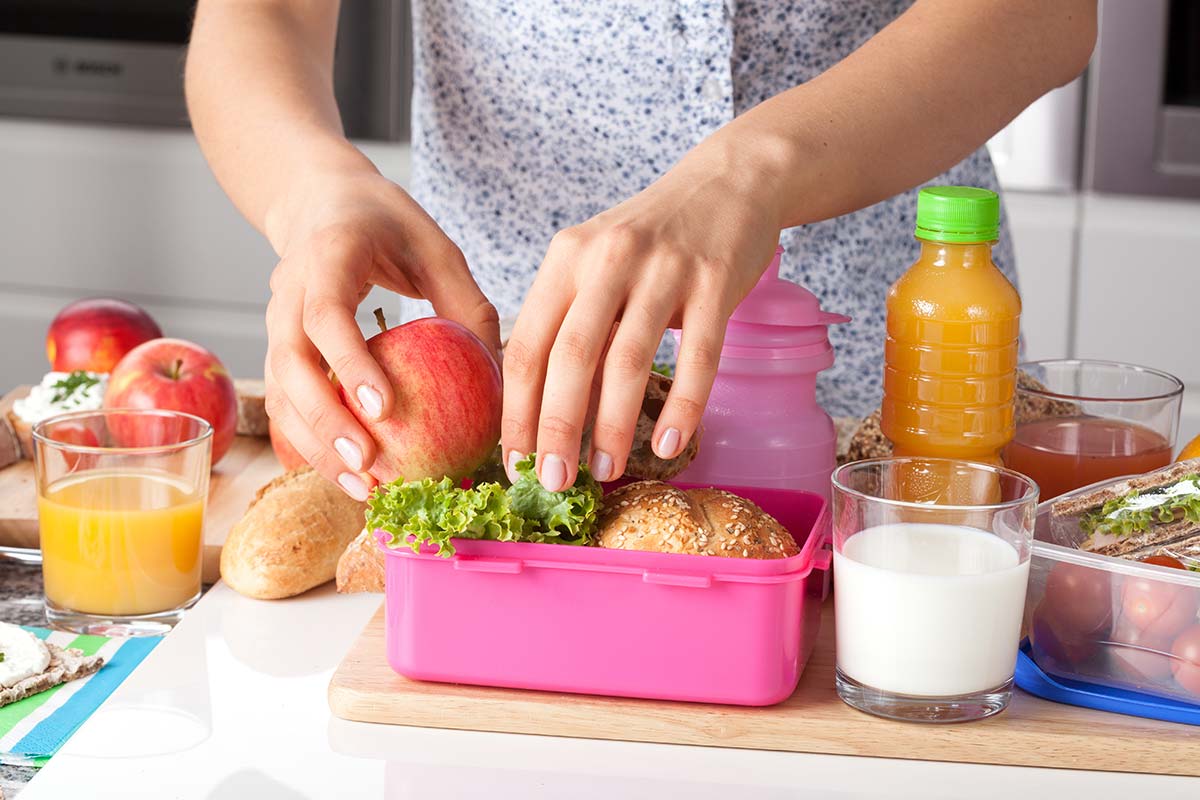Are you looking for simple ways to prepare a waste-free meal for your child? The good news is that it’s never been easier to prepare a healthy, environmentally friendly school lunch that your kids will love.
Why prepare a waste-free meal?
Using a waste-free lunch box helps reduce your carbon footprint on the planet. While many parents are used to the “convenience” of single-use plastic bags and containers, all that convenience translates into a lot of waste – 90 pounds per year per child! This waste then ends up in our oceans and landfills and contributes to increased greenhouse gases that threaten our children’s future.
How can we prepare a meal without waste?
1) Choose a lunch box that makes it easy to prepare a well-balanced school meal. All children have their likes and dislike when it comes to lunch. One child likes variety and surprises, while another enjoys the familiarity of the same PB&J sandwich every day. But none of the children wants to have their sandwich touch their fruit and have everything soaked. Choose a lunch box that will allow you to pack a variety of foods that stay in their compartment and don’t “touch” each other.

2) Choose a stainless steel lunch box. Storing food in stainless steel is a better alternative to plastic and has been used by other cultures for generations. Questions remain about the safety of storing food in plastic. Several studies have shown that hazardous chemicals contained in plastic can leach into food and beverages. PVC and polystyrene have been known to be dangerous for years, and recently there has been much talk about the dangers of polycarbonate plastic No. 7. This plastic is widely used in clear, rigid sports bottles and some baby bottles. It contains bisphenol A, a known hormone disruptor that has recently been linked to several health problems, including heart disease, diabetes, obesity, certain types of cancer, and hyperactivity disorders in children. With so many proven risks already documented, it’s hard not to imagine what the next supposedly “safe” plastic will be! There are so many environmentally friendly alternatives to plastic bags, why not skip the potential problems associated with plastic and pack your food in a metal lunch box without plastic instead?
3) Choose a reusable, insulated lunch bag made from recycled materials. Gone are the days when you needed a brown paper bag to wrap your lunch. Choose a reusable lunch bag, and make sure it is lead and PVC-free. You can wash it regularly to keep it clean, and your child can use it throughout the school year.
4) Choose reusable water bottles, preferably stainless steel. With such a choice of stainless steel bottles, you are sure to find one that will suit your child’s needs. There are small bottles for small children, brightly colored bottles, and bottles with cool designs. Choose BPA-free stainless steel bottles.
5) Choose cloth napkins, preferably ones that will appeal to children. Cloth towels are easy to machine clean and can be reused throughout the year.

6) Choose reusable cutlery. If your child needs a fork or spoon with his/her meal, you can include a reusable stainless steel fork and knife, rather than throwing away the plastic ones. If your child tends to forget utensils at school, stock up on inexpensive stainless steel cutlery at a local thrift store – you won’t risk losing your favorite cutlery.
7) Choose to buy food in bulk. Using reusable food containers allows you to purchase food in size, which is cheaper and less wasteful than single-use boxes. For example, a 1 oz bag of pre-packaged cheese crackers costs 87 cents, but 1 oz of those same crackers in a 12 oz can cost 43 cents – half the price!
8) Choose organic foods. Organic food is right for your child’s health and the health of the planet. Some families may feel that they cannot afford to spend the money to buy everything organic. Here is the Environmental Working Group’s list of the 13 most important foods to buy organic because conventional versions contain the most pesticide residues. These are (in order) peaches, apples, sweet peppers, celery, nectarines, strawberries, cherries, lettuce, grapes – imported, pears, spinach, potatoes, and carrots.
With so many sustainable and environmentally friendly choices, it’s easy to be green and prepare a waste-free, eco-friendly lunch box with foods your kids will love.
